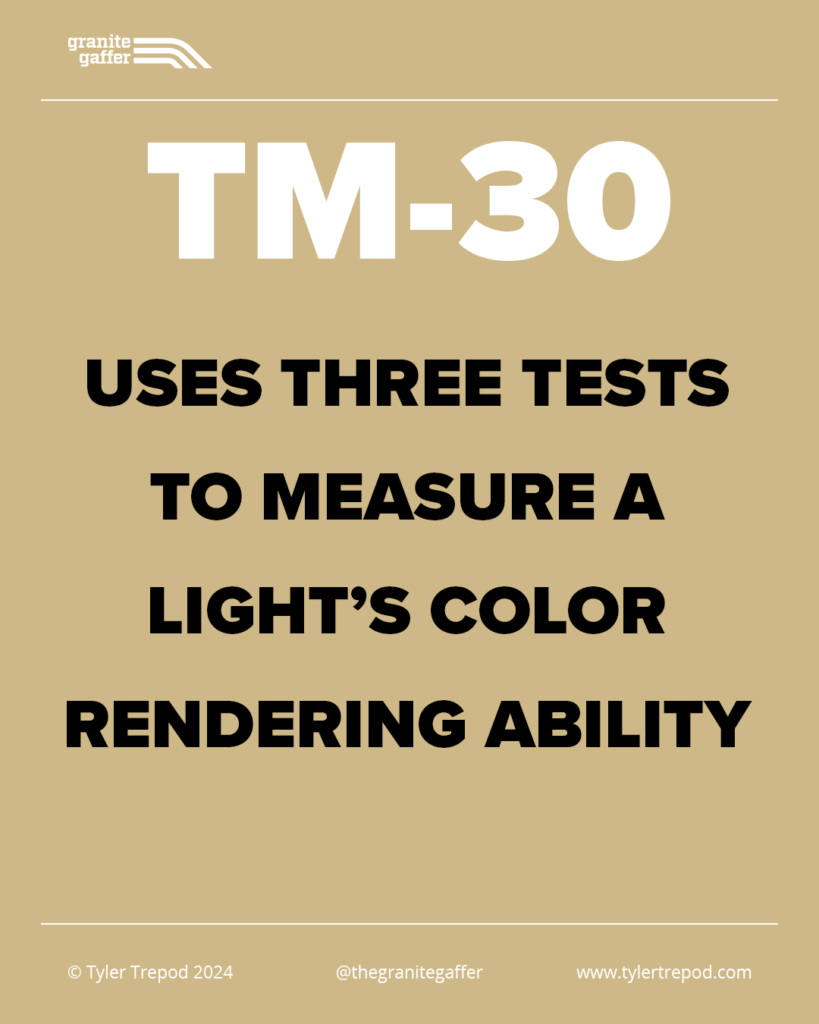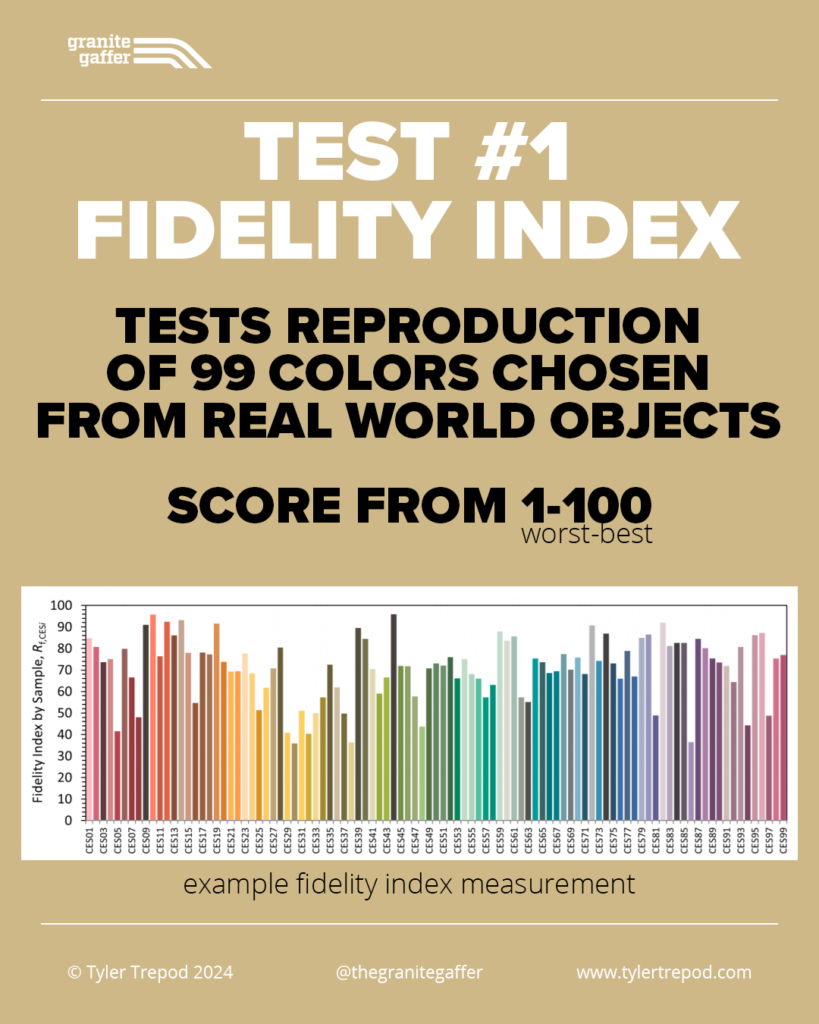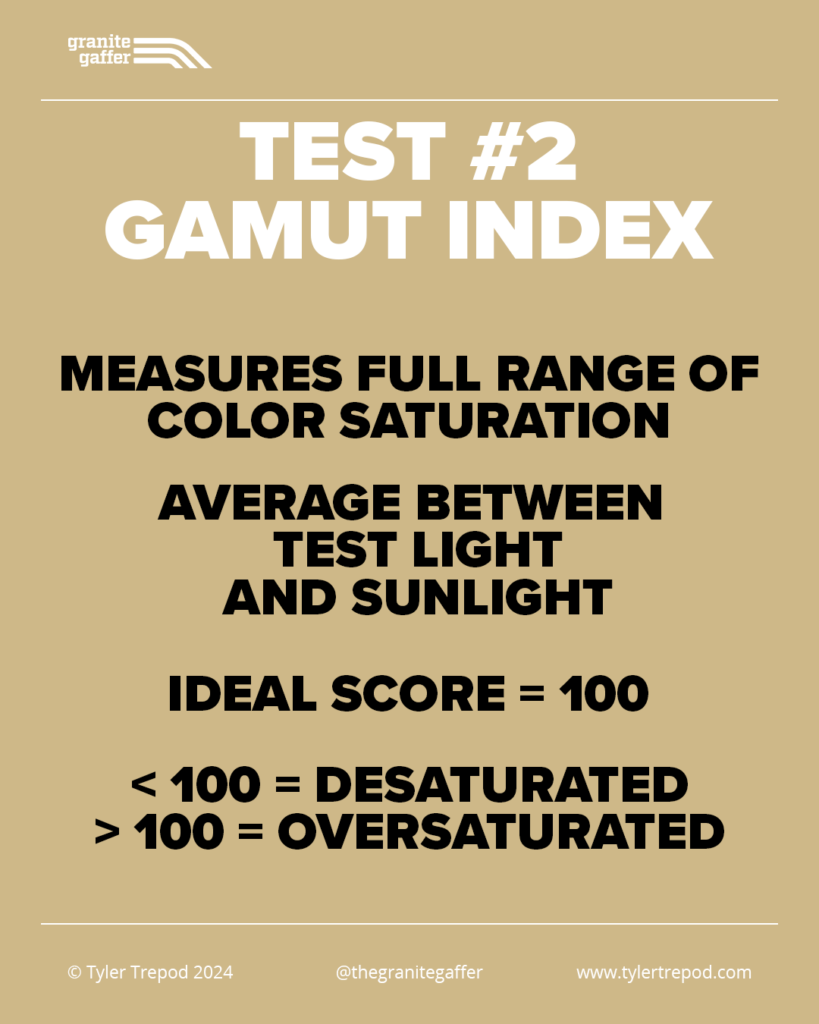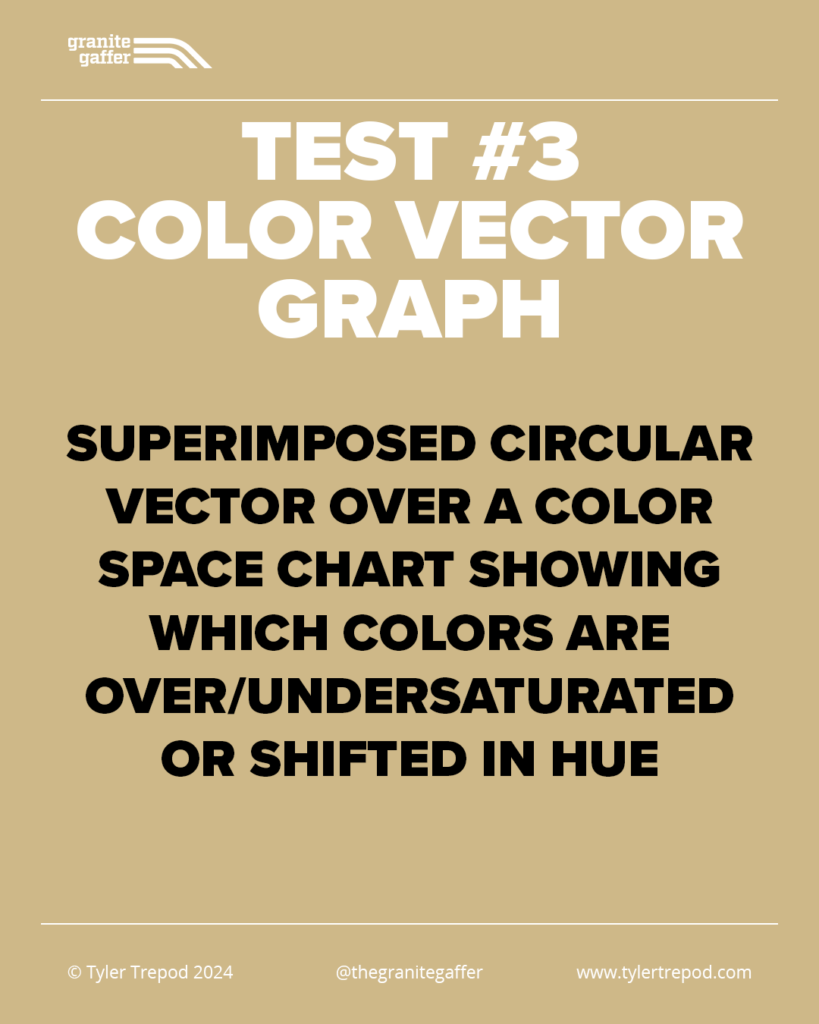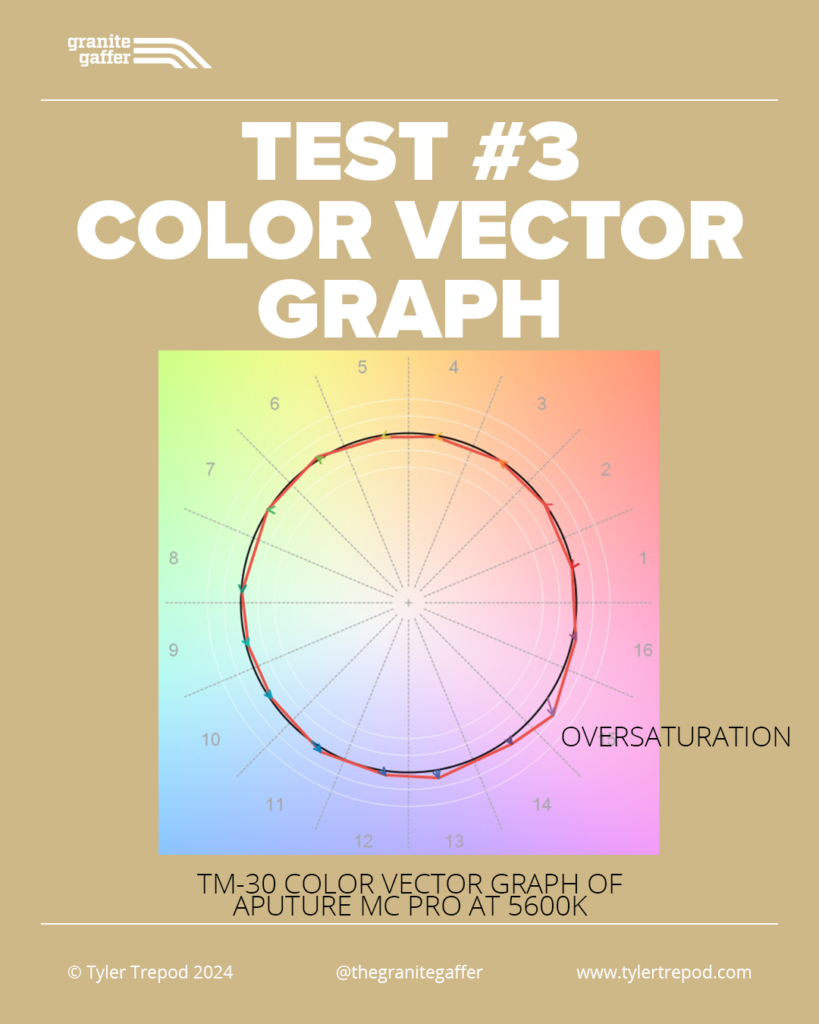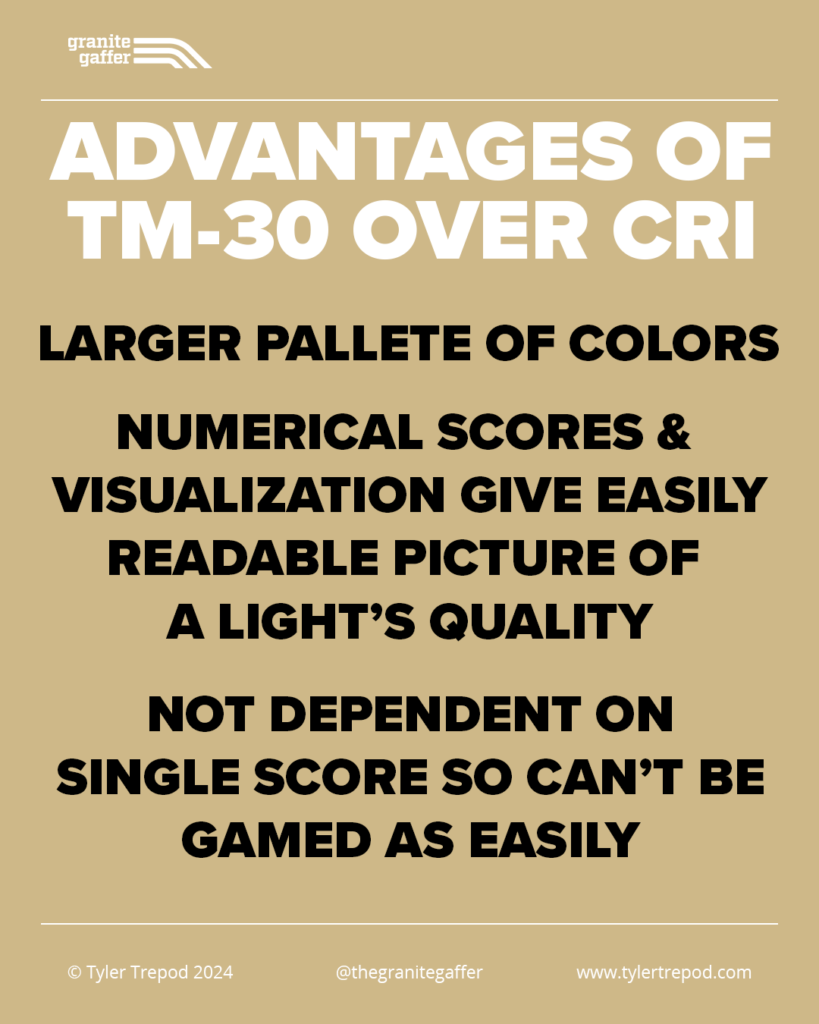guide: using TM-30
TM-30 has quickly become one of the two new standards for how the quality of a light is measured, but what does it actually test for?
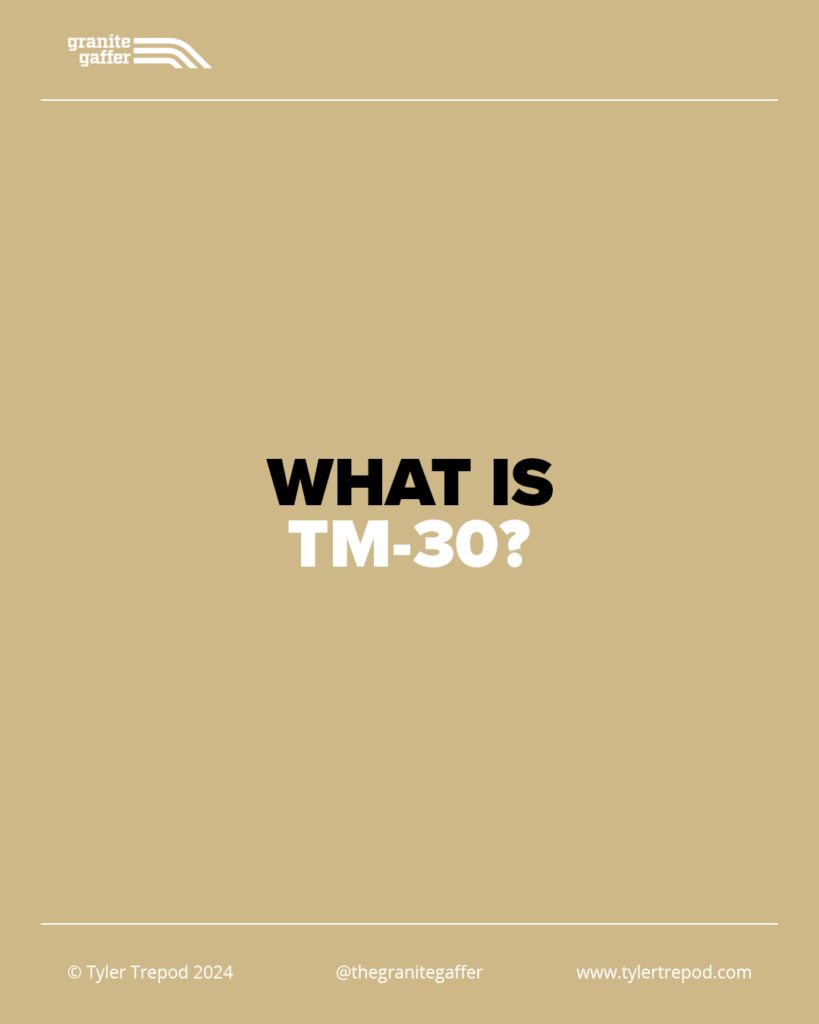
summary
Well, there’s actually 3 components to reading a TM-30 score!
The first is the Rf value, or a light’s fidelity index. This is an averaged score from 1 (worst) to 100 (best) that measures a lights ability to accurately reproduce 99 pre-determined colors, a much wider range than CRI or TLCI uses. Lights scoring above 90 generally reproduce colors fairly accurately.
The second value is the Rg value, the lights gamut index. The gamut index measures how saturated the colors are that are produced by this light. This is also an averaged score, but can range from below 60 to above 140, with 100 meaning equivalent saturation to a daylight reference. Below 100 means a color appears desaturated by this light, over 100 means a color would appear oversaturated.
Lastly, the color vector graph is a visual display of which colors are saturated or desaturated by the light, and also which way those hues shift if at all. This is represented as a circle overlaid on top of a color wheel, with the points of the circle corresponding to the test points, and little arrows indicating shifts of saturation and hue.
TM-30 is a comprehensive test that really digs into the nuances of the color reproduction of a light. It’s no wonder that it’s become the favorite of a lot of DP’s and gaffers since it’s inception!
